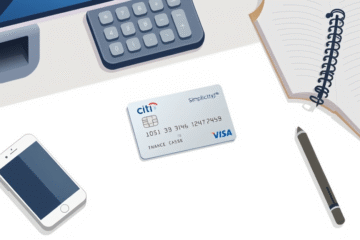Understanding Business Credit Card Functionality
Business Credit cards are essential financial tools that can significantly enhance how businesses manage their expenses.
This article will explore the intricacies of business credit cards, detailing their revolving credit nature and key features that cater specifically to business needs.
We will delve into aspects such as credit limits, expense management, tailored benefits, and the potential trade-offs regarding consumer protections.
By understanding these elements, businesses can make informed decisions on utilizing credit cards effectively to support their financial operations and growth.
Understanding Business Credit Cards
Business credit cards serve as a vital financial tool, allowing companies to manage expenses efficiently through their revolving credit nature.
They operate on a billing cycle that enables businesses to make purchases up to a set credit limit, with interest calculated on any outstanding balance.
By leveraging these cards, companies can consolidate expenses and enhance cash-flow management, ensuring better oversight of their financial operations.
Revolving Credit Structure in Business Cards
The revolving credit system in business cards functions by providing access to a predetermined credit limit, which defines the maximum amount a business can borrow at any time.
Businesses can make purchases, draw on their credit line, and then repay the borrowed amount.
Unpaid balances from one billing cycle to the next roll over automatically.
However, these balances accrue charges based on the interest rate, calculated daily.
Thus, while business cards offer financial convenience, they demand careful management.
Missing payments leads to additional interest and late fees, especially if the minimum payment is not met each month.
A significant advantage of business credit cards is the provision of higher credit limits, allowing more substantial purchases and smoother cash flow management.
Alongside this, detailed monthly statements aid in tracking business expenses.
Yet, businesses must remain vigilant about their spending practices to avoid overwhelming debt.
The revolving credit structure’s allure lies in its flexibility, but it can quickly turn risky without disciplined repayment habits.
This system benefits businesses that manage their cash flow prudently, ensuring borrowed funds are repaid promptly to avoid costly interest charges.
Revolving credit offers flexibility but requires disciplined repayment.
Billing Cycles and Payment Terms
The billing cycle for a business credit card typically spans a one-month period, marking the duration between your statement closing dates.
This cycle is crucial as it determines the due date, which is the specific day by when you must make at least the minimum payment to avoid penalties.
Following the statement close, a grace period often extends for at least 21 days, allowing you to pay in full to avoid interest, as detailed by Capital One.
Missing this window could lead to late fees, emphasizing the importance of timely payments.
Keep your credit healthy by understanding these terms.
| Statement Close | 15 Aug |
| Payment Due | 05 Sep |
| Late Fee Applies | 06 Sep |
Managing Credit Limits and Expenses
Businesses today leverage credit limit management through effective use of business credit cards.
By implementing precision-focused spending controls, companies not only protect their financial health but also optimize operational expenses.
Offering employee cards requires a strategic approach.
For example, firms can deploy helpful tools such as automated expense tracking to ensure all transactions align with their financial policies.
This becomes particularly crucial as companies expand their employee base and diversify spending.
For detailed strategies, visit Chase’s guide to tracking employee spending.
- Set per-employee spending caps
- Enable real-time transaction alerts
- Reconcile statements weekly
By integrating these practices, organizations enhance transparency while maintaining accountability over corporate expenses.
Unique Features of Business Credit Cards
Business credit cards offer unique features that cater specifically to organizational needs, setting them apart from personal cards.
A critical advantage is the provision for employee cards, enabling companies to manage and track expenses across teams with ease.
Moreover, comprehensive spending analytics tools allow businesses to gain insights into expenditure patterns, promoting informed financial decisions.
These cards also integrate robust reporting tools, crucial for maintaining detailed financial visibility.
Through business rewards programs, companies can benefit from tailored incentives designed to maximize savings on business-related purchases.
Key benefits include:
- Higher credit limits
- No additional cost for employee cards
- Enhanced fraud protection
- Streamlined expense integration with accounting systems
These features can greatly enhance a business’s financial control and efficiency.
For a deeper dive into these aspects, consider reviewing the comprehensive insights available at Explore Business Credit Cards by Brex.
Payment Protection and Security
Business credit cards include a range of built-in fraud protection measures, significantly reducing financial risks for companies.
These cards often implement EMV chips and tokenization, advanced technologies that encrypt payment information, ensuring data safety during transactions.
Many providers also offer real-time fraud alert services, immediately notifying business owners of unusual or unauthorized purchases.
Another key feature is liability limits, which protect businesses from incurring heavy losses due to fraudulent activity.
By focusing on these elements, companies can bolster their defenses against potential threats.
Furthermore, credit cards offer robust dispute resolution processes, a cornerstone of purchase protection.
In the event of unintended or incorrect charges, businesses can engage in dispute handling to resolve issues efficiently.
This ensures that companies are not left out of pocket while discrepancies are investigated.
Card issuers provide comprehensive support through dedicated services, guiding businesses through the resolution process.
As a result, business credit cards not only assure operational continuity but also inspire confidence in financial management.
Glossary of Essential Terms
Revolving Credit: A flexible financial option allowing businesses to borrow up to a specified limit, repay, and borrow again, as detailed by Bill.com’s guide on Revolving Credit, this type of credit is essential for managing fluctuating business expenses and maintaining cash flow; Credit Limit: The maximum amount a business can borrow under a revolving credit line, a highlight of GoCardless’s exploration of Revolving Credit Definition; Interest Rate: The cost of borrowing expressed as a percentage of the principal, significantly impacting credit card expenses; Billing Cycle: The period between statement closures when new charges accumulate, after which the cardholder receives a bill; Grace Period: A timeframe post-billing cycle allowing balance repayments without incurring interest; Minimum Payment: The smallest sum required to keep the account in good standing without late fees.
Harnessing these terms empowers businesses to strategically navigate financial management.
In conclusion, understanding business credit cards is crucial for effective financial management.
By leveraging their unique features and benefits, businesses can streamline expenses while being mindful of the consumer protections that may be sacrificed.



0 Comments